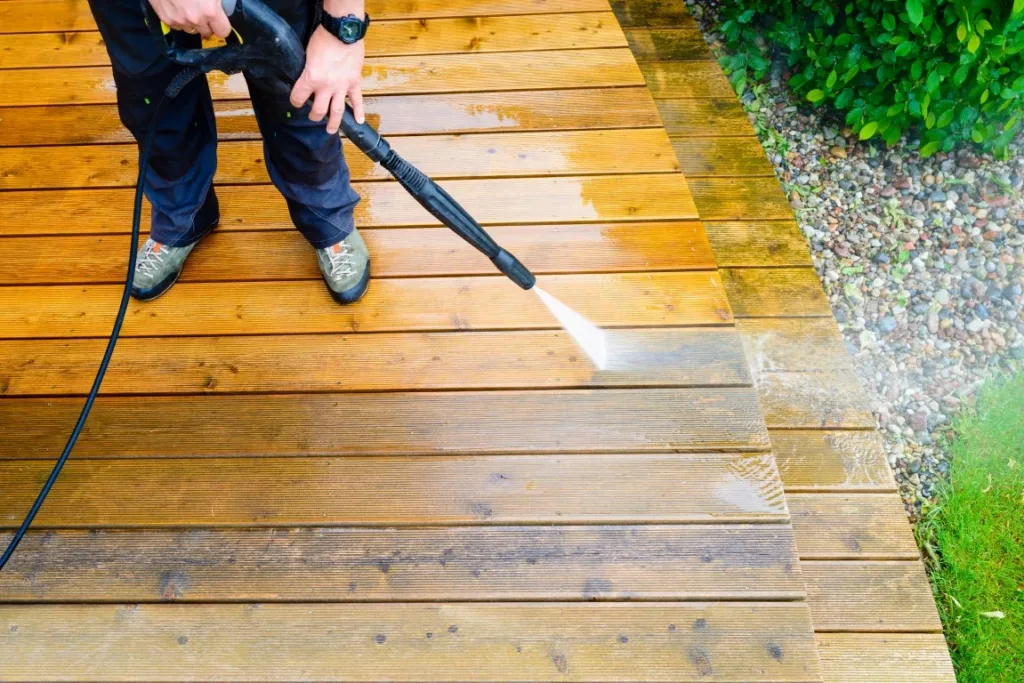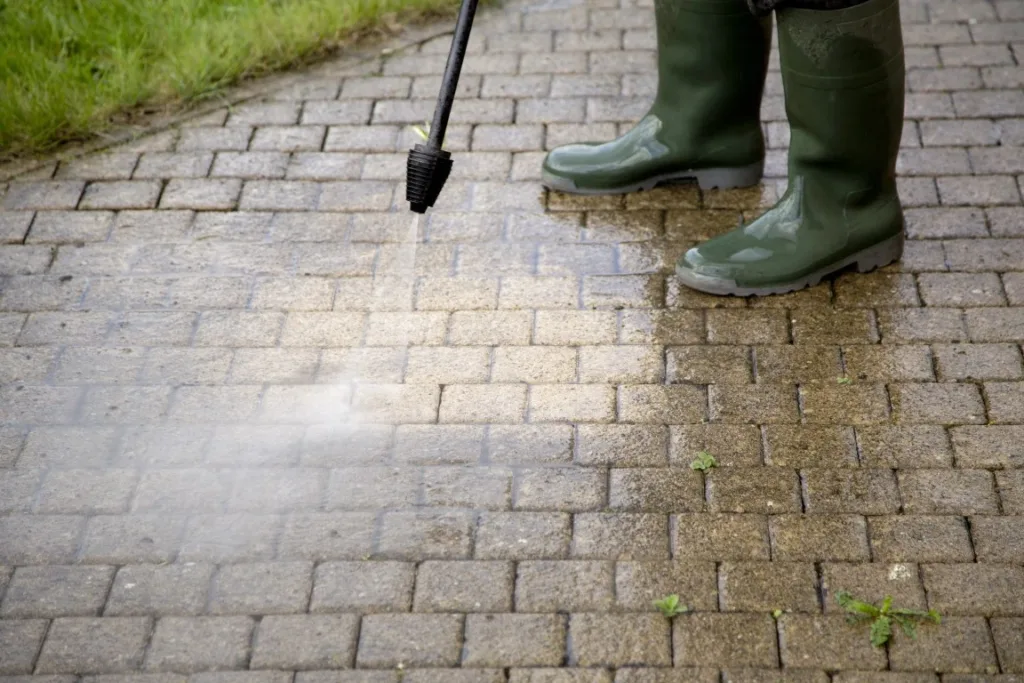
Pressure washing can effectively clean and restore surfaces around your home. But when done incorrectly, it can cause more harm than good. You can accidentally damage siding, concrete, delicate stonework, landscaping, as well as injure yourself. Whether you want to clean your property’s exterior yourself or hire a professional, you should understand the most common pressure washing mistakes and how to avoid them to protect your home and yourself.
1. Using the Wrong Pressure Setting
You might be tempted to use the highest pressure setting in order to maximize your cleaning time and blast away dirt. However, too much pressure can damage siding, strip paint, gouge wood, and crack concrete.
How to Avoid It
Adjust the PSI (pounds per square inch) based on the surface you’re cleaning. Use lower pressure for wood and soft materials and higher pressure for tough surfaces like concrete. When in doubt, start low and increase the pressure gradually to avoid any mistakes.
2. Holding the Nozzle Too Close
You may think you need to get the nozzle close to a stain for a deeper clean, but holding it too close can etch or scar the surface and damage paint.
How to Avoid It
Always maintain a safe distance, typically 12 inches from the surface. Test your pressure washer in an inconspicuous area first to ensure you have the right pressure and distance to protect you and your home.
3. Using the Wrong Nozzle
Pressure washers have different nozzles for specific tasks. Using a narrow-angle nozzle on a delicate surface can cause damage, while a wide-angle one might not effectively clean tough grime.
How to Avoid It
To avoid mistakes, choose the right nozzle:
- 0° (red) — Maximum pressure, usually only used on concrete or metal to remove tough stains or to strip paint.
- 15° (yellow): Stronger pressure for blasting away heavy grime on surfaces like concrete, brick, or heavy-duty equipment.
- 25° (green): Versatile spray for general-purpose cleaning, such as decks and patios.
- 40° (white): Wide, gentle spray good for washing cars, windows, and siding.
- Soap nozzle (black): Low pressure for applying detergent and soap evenly over a surface.

4. Skipping Detergent or Using the Wrong Kind
Water alone may not remove mildew, oil stains, or tough grime, and using the wrong detergent can harm plants or surfaces, be ineffective, or leave behind a residue that’s tough to remove.
How to Avoid It
Use a pressure washer-safe detergent formulated for the surface you’re cleaning and the dirt or grime you’re trying to remove. Always rinse thoroughly and check the label for environmental safety.
5. Not Prepping the Area First
Pressure washing surfaces without sweeping off debris or dirt, removing obstructions, or covering delicate items can lead to broken windows, stripped paint, inconsistent cleaning or mistakes, or injured plants.
How to Avoid It
Before pressure washing, remove furniture, cover outlets, tape off vents, and protect surrounding plants and landscaping before spraying. This helps protect your home — and your yard.
Pressure Washing Painted Surfaces Without Testing
Pressure washing can strip or chip paint if done improperly, especially on older surfaces.
How to Avoid It
Test a small, hidden area first. If the paint begins to lift or flake, lower the pressure or use a gentler cleaning method.
7. Neglecting Safety Precautions
Many people underestimate how powerful a pressure washer can be, leading to injuries or eye damage. .
How to Avoid It
Wear safety goggles, gloves, closed-toe shoes, and long pants. Never point the washer at yourself or others, spray near electrical outlets, or use the power washer as a toy. If you aren’t confident with the pressure washer and afraid of making a mistake, consider hiring a professional.
8. Ignoring Manufacturer Guidelines
Never assume that all pressure washers work the same and have the same settings. This can lead to mistakes or damage.
How to Avoid It
Always read your equipment’s manual. It provides specific instructions on pressure levels, detergent types, and safety procedures.
9. Washing in the Wrong Weather
Pressure washing on a hot day can cause the soap and water to dry too quickly, leaving behind streaks or residue. Wind, rain, and freezing temperatures can also impact the effectiveness of your wash and drying process.
How to Avoid It
Choose a cool, overcast day if possible. Cleaning in the early morning or late afternoon will prevent quick drying and allow time for proper rinsing.

Be Smart and Safe When Pressure Washing
Pressure washing can restore the beauty of your home’s exterior — but only if done correctly. By avoiding these common mistakes and following best practices, you’ll protect your property, save time, and effectively clean off all dirt and grime.
Afraid of damaging your home? Hire Emerald City Window Cleaning to handle the job safely and efficiently.
